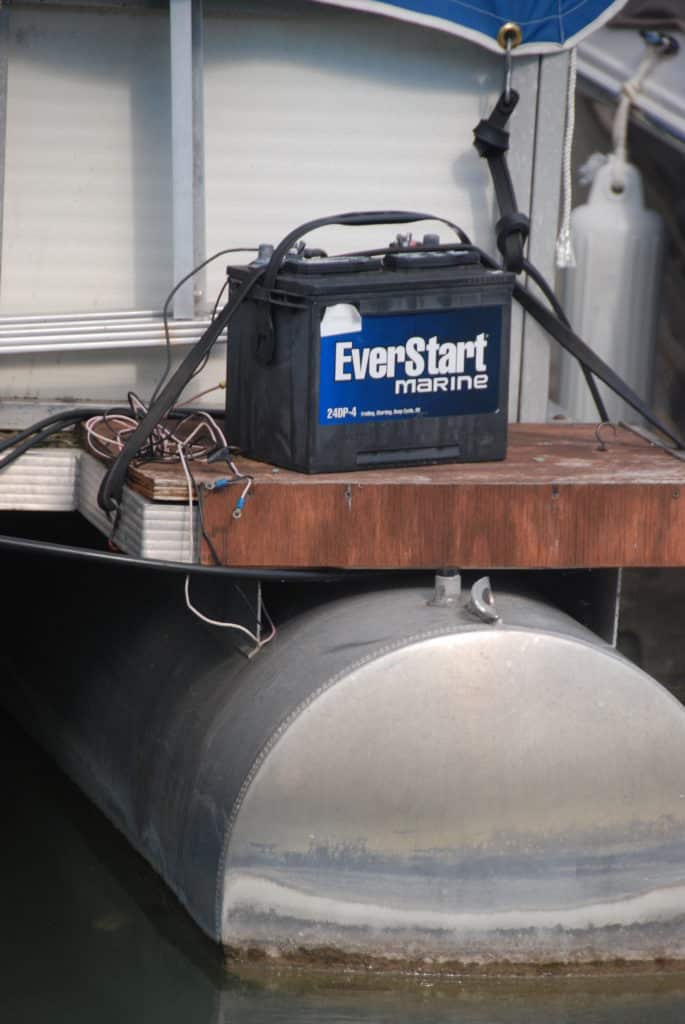
Pontoon Battery
The fall foliage colors were at their peak and we were prepared for our final trip of the season as we launched the family pontoon for an autumn “leaf peeping” weekend afloat. Our favorite college and pro football teams were playing that Saturday and Sunday, so we had packed a portable TV and all the fixings for a pair of tailgate parties aboard the pontoon. Since we intended to sleep out “on the hook” and under a full camper canvas that night, we had sleeping bags, a propane lantern and plenty of fishing tackle aboard.
It was a crisp Saturday morning after a full week of below-average temperatures, and thin panes of ice lingered in the shadows around the launch ramp as we got an early start. I realized it was going to be a short trip when I turned the key to fire the outboard. There was just enough juice in the starting battery to turn the motor over a half dozen times before it groaned and gave up. I knew better than to try again and without a back-up I was dead in the water. A close look at the battery’s scratch-off purchase date sticker showed that I had already benefited from an extra couple of months of power beyond cell’s 24 month life expectancy, and figured I had finally punched through the battery’s juice envelope.
We decided to make the best of the situation and left the boat tied to the deserted dock as we enjoyed a traditional pre-game tailgate party around the trailer in the parking lot. As kickoff time approached, the sun had been overhead for a couple of hours and warmed things up significantly. When I returned to the rig and gave the key a token turn before loading the boat back onto the trailer, the “expired” battery fired that engine like it was brand new!
The weekend was saved and we enjoyed a wonderful autumn cruise before putting the rig away for the season, but not before leaving a note to myself that I needed to buy a new battery before breaking it out for the start of the next.
Experience and research since that incident have combined to make me a bit more battery savvy. For example, in addition to being past its prime, the reasons my battery failed to start the outboard at the beginning of that brisk autumn were threefold: before the sun had a chance to warm things up, the oil in the engine was still thick with the chill, making cranking efforts more difficult. The cold also kept the gasoline from vaporizing – and firing –as easily as the fuel did once conditions warmed up. And, finally, the battery itself was not fully charged from the previous weekend, which had also been frigid and had hampered the cell’s charging efficiency from the outboard.
CHECK YOUR WINTER STORAGE SETUP
I’ve also learned that the best way to extend a battery’s life expectancy is to offer the proper off-season care. That includes:
-Disconnecting terminal connections to eliminate any electrical loads
-Cleaning corrosion off the terminals and cable connections
-If the battery has removable vent caps, removing and filling each cell to the proper level
-Fully charging the battery before storing it
-Charging the battery at regular intervals during the off-season
For extended periods of non-use, you can leave the battery on the boat or move it to an inside location such as a garage or basement for storage; just make sure there is plenty of ventilation and the battery will not be exposed to excessive heat. As long as you keep the battery charged, using a trickle or automatic charger, even sub-freezing temperatures will do it no harm. I find that keeping the battery in a visible and accessible location in my garage helps remind me – and makes it convenient — to keep it juiced during the off-season.









